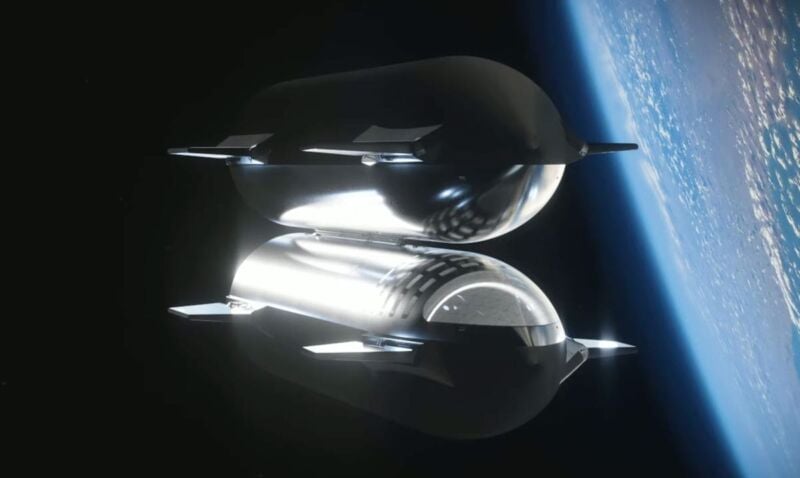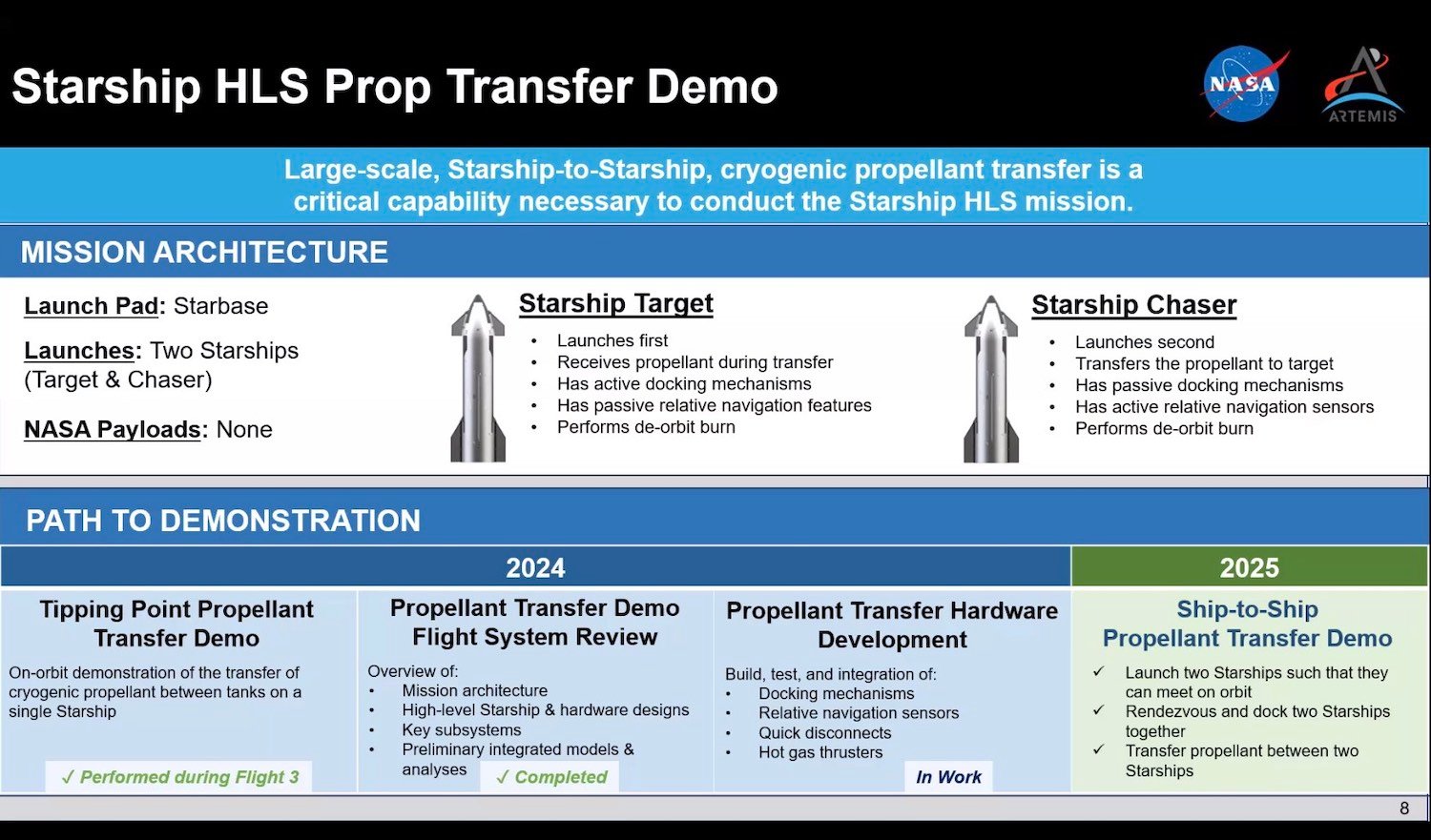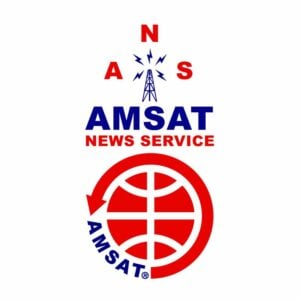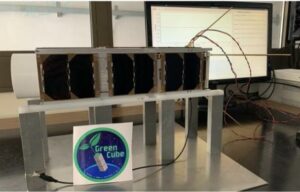In this edition:
- 2024 AMSAT Board of Directors Election – Call for Nominations
- Last Call for AMSAT/TAPR Banquet Tickets
- Hamvention 2024 – Here We Come!
- Wanted: Your AO-7 Experiences and Memories
- AMSAT Ambassador Program Re-Introduced at Hamvention
- AMSAT Francophone & Fédération des Clubs Radioamateurs du Québec (RAQI) Publish Preliminary Geostationary Payload Proposal
- A Few Minutes with AMSAT Ambassador Clint Bradford, K6LCS
- Changes to AMSAT-NA TLE Distribution for May 10, 2024
- ARISS News
- Upcoming Satellite Operations
- Hamfests, Conventions, Maker Faires, and Other Events
- Satellite Shorts From All Over
The AMSAT News Service bulletins are a free, weekly news and information service of AMSAT, the Radio Amateur Satellite Corporation. ANS publishes news related to Amateur Radio in Space including reports on the activities of a worldwide group of Amateur Radio operators who share an active interest in designing, building, launching and communicating through analog and digital Amateur Radio satellites.
The news feed on http://www.amsat.org publishes news of Amateur Radio in Space as soon as our volunteers can post it.
Please send any amateur satellite news or reports to: ans-editor [at] amsat [dot] org.
You can sign up for free e-mail delivery of the AMSAT News Service Bulletins via the ANS List; to join this list see: https://mailman.amsat.org/postorius/lists/ans.amsat.org/
ANS-133 AMSAT News Service Weekly Bulletins
To: All RADIO AMATEURS
From: Radio Amateur Satellite Corporation
712 H Street NE, Suite 1653
Washington, DC 20002
DATE 2024 May 12
2024 AMSAT Board of Directors Election – Call for Nominations
AMSAT solicits nominations for the 2024 AMSAT Board of Directors election, to be held in the third quarter of the year. The seats of the following three incumbent Directors expire in 2024 and will be filled by this year’s election:
– Mark Hammond, N8MH
– Bruce Paige, KK5DO
– Paul Stoetzer, N8HM
Further, up to two Alternate Directors may be elected for one-year terms. A valid nomination for Director must be written and requires either one Member Society or five current individual members in good standing to nominate an AMSAT member. Written nominations, with the nominee’s name, call sign, and contact information, as well as the nominators’ names, call signs, and contact information, should be sent to the AMSAT Secretary:
Jeff Davis, KE9V
PO Box 11
Yorktown, IN 47396
AMSAT bylaws require that the nomination be written and in the form specified by the Secretary who has elected to accept written nomination materials via postal mail or in electronic form, including email or electronic image of a paper document. Fax transmissions cannot be accepted.
Email nominations may be sent to jdavis [at] amsat [dot] org.
No matter what means are used, petitions MUST be received by the Secretary no later than June 15th. The Secretary will verify the qualifications of candidates and nominating members or Member Societies as petitions are received and will notify candidates whether their nominations are in order by the end of June.
[ANS thanks Jeff Davis, KE9V, AMSAT Secretary for the above information.]
Last Call for AMSAT/TAPR Banquet Tickets
The deadline for purchasing tickets for the 15th annual AMSAT/TAPR banquet is Monday, May 13th at 21:00 Z (5:00 PM EDT). Banquet tickets must be purchased in advance and will not be sold at the AMSAT booth. There will be no tickets to pick up at the AMSAT booth. Seating is limited to the number of meals sold by the deadline. Tickets purchased on-line will be maintained on a list with check-in at the door at the banquet center.
The banquet will be held at the Kohler Presidential Banquet Center on Friday, May 17th at 18:30 EDT. This dinner is always a highlight of the TAPR (Tucson Amateur Packet Radio) and AMSAT activities during the Dayton Hamvention. This year’s banquet speaker will be Bill Reed, NX5R, AMSAT PACSAT Project Manager, who will highlight the forthcoming PACSAT digital communications payload.
The Kohler Presidential Banquet Center is located at 4548 Presidential Way, Kettering, Ohio – about 20 minutes away from the Greene County Fairgrounds.
Purchase your tickets online at https://www.amsat.org/product-category/amsat-at-hamvention/
[ANS thanks Paul Stoetzer, N8HM, AMSAT Executive VP for the above information.]
The 2024 AMSAT President’s Club coins are here now!
Help Support GOLF and Fox Plus
Join the AMSAT President’s Club today and help
Keep Amateur Radio in Space!
https://www.amsat.org/join-the-amsat-presidents-club/
Hamvention 2024 – Here We Come!
It’s that time of the year again with only five days to go before the festivities begin.
Starting off is the annual AMSAT “Dinner at Tickets” party that will be held at Tickets Pub & Eatery on Thursday, May 16th from 6:00 PM to 8:00 PM EDT. There is no program or speaker – just good conversation. Everyone is invited regardless of whether or not they helped with setup or plan to work in the booth. Tickets has a great selection of Greek and American food and great company! Food can be ordered from the menu; drinks (beer, wine, sodas and iced tea) are available at the bar. Come as you are; no reservations required. Bring some friends and have a great time the night before Hamvention. Tickets Pub & Eatery is located at 7 W. Main St, Fairborn, OH 45324.
The 15th annual AMSAT/TAPR Banquet will be held at the Kohler Presidential Banquet Center on Friday, May 17th at 18:30 EDT. This year’s banquet speaker will be Bill Reed, NX5R, AMSAT PACSAT Project Manager, who will highlight the forthcoming PACSAT digital communications payload. Tickets must be purchased no later than Monday, May 13th 5:00 PM EDT. The Kohler Presidential Banquet Center is located at 4548 Presidential Way, Kettering, Ohio – about 20 minutes away from the Greene County Fairgrounds.
The AMSAT Forum will take place in Forum Room 2 on Saturday, May 18th at 1:20 PM – 2:50 PM. This will immediately follow the ARISS Forum in the same room at 12:10 PM, so get there early and see both presentations!
It’s not too late to volunteer for working the AMSAT booth. Whether you can lend a hand for a few hours or a full day, we can always use help. Contact Phil Smith, W1EME, AMSAT Hamvention Team Leader via email at w1eme [at] amsat [dot] org.
[ANS thanks AMSAT for the above information.]
Wanted: Your AO-7 Experiences and Memories
As we prepare to celebrate AO-7’s 50th anniversary since its launch on November 15, 1974, a small team of writers are collecting stories about the history of this record-breaking satellite, now the longest operating satellite of any type – government, military, commercial or private. Mr. Jan King, W3GEY/VK4GEY was a member of the original team of hams that were responsible for the design, build and launch of AO-7. Jan is interested in hearing how hams adapted to AO-7’s operating characteristics over the years. He is also especially interested in accounts of how AO-7 was used for operational or scientific experiments.
Jan continues to track and monitor the health of AO-7 after all these years. Jan predicts that within a few months AO-7 will enter a period of five years of continuous sunlit operation without eclipse interruptions. Already with 50 years behind it, AO-7 might continue to set new records and host more invaluable scientific studies and practical uses.
Working with Jan is Frank Karnauskas, N1UW, AMSAT VP-Development. Amateurs with stories they wish to contribute to the project are encouraged to contact Frank via email f.karnauskas [at] amsat [dot] org.
[ANS thanks Jan King, W3GEY/VK4GEY and Frank Karnauskas, N1UW, AMSAT VP-Development for the above information.]
Need new satellite antennas?
Purchase M2 LEO-Packs from the AMSAT Store.
When you purchase through AMSAT, a portion of the proceeds goes towards
Keeping Amateur Radio in Space.
https://amsat.org/product-category/hardware/
AMSAT Ambassador Program Re-Introduced at Hamvention
Sometimes in the past referred to as Field Operations, other times as Area Coordinators, maintaining a presence at local hamfests and at ARRL conventions has been a long standing AMSAT tradition. Now known as the AMSAT Ambassador Program, our volunteers continue this important activity, stimulating interest in amateur satellites, helping newcomers get on the air and building membership in AMSAT.
At this year’s Hamvention, AMSAT is pleased to introduce Mr. Bo Lowrey, W4FCL, Director – AMSAT Ambassador Program. Bo has a solid background in aerospace education and public relations including serving as Director – Space Science and IT for the National Air and Space Education Institute in Louisville, KY and as a NASA / JPL Solar System Ambassador Applicant Review, Jet Propulsion Laboratory in Pasadena, CA.
Under Bo’s leadership, the Ambassador Program is being revitalized with new levels of support for volunteers. This included new display banners and presentation folders for local hamfests as well as a special callsign badge and a selection of Ambassador branded apparel. A fresh set of updated PowerPoint scripted presentations are also being made available for in-person and online club presentations.
Training will also be made available to help prepare volunteers for making the best possible presence to their audiences. Volunteers will also have access to online technology such as Microsoft Teams to collaborate with fellow Ambassador volunteers.
While in past years, AMSAT’s presence at local hamfests was largely up to volunteers in the area, Bo plans to be more pro-active in recruiting volunteers to be available for major events such as ARRL Section and Division conventions as well as at major events hosted by special interest groups such as VHF/UHF and microwave societies.
AMSAT members who are interested in more information on becoming an AMSAT Ambassador are encouraged to visit the AMSAT booth at Hamvention and meet with Bo. If you are not attending Hamvention, please contact Bo via email blowrey [at] amsat [dot] org.
[ANS thanks Bo Lowrey, W4FCL, Director – AMSAT Ambassador Program for the above information.]
AMSAT Francophone & Fédération des Clubs Radioamateurs du Québec (RAQI) Publish Preliminary Geostationary Payload Proposal
AMSAT Francophone (AMSAT-F) and Fédération des clubs radioamateurs du Québec (RAQI) are soliciting comments on their draft proposal to the European Space Agency (ESA) for an amateur geostationary payload. AMSAT-UK, the British Amateur Television Club (BATC), and AMSAT-NA, with input from the UK Microwave Group, previously submitted a proposal (https://www.amsat.org/wordpress/wp-content/uploads/2023/12/ESA-GEO-proposal-AMSAT-UK.pdf) as has AMSAT-DL (https://amsat-dl.org/en/the-next-generation-of-a-geo-meo-amateur-radio-payload/).
These proposals have been submitted in response to an ESA call for proposals for a future amateur geostationary payload with the potential to cover Europe and at least a portion of North America.
The English version of the proposal can be found at https://site.amsat-f.org/download/119824/?tmstv=1715353379 and the French version can be found at https://site.amsat-f.org/download/119821/?tmstv=1715353379.
Comments may be submitted to groupe.travail.geo.esa [at] amsat-f [dot] org by May 24, 2024.
[ANS thanks AMSAT-F for the above information.]
Want to fly the colors on your own grid expedition?
Get your AMSAT car flag and other neat stuff from our Zazzle store!
25% of the purchase price of each product goes towards
Keeping Amateur Radio in Space
https://www.zazzle.com/amsat_gear
A Few Minutes with AMSAT Ambassador Clint Bradford, K6LCS
ANS writer Mark Blackwood, KI5AXK, was able to catch AMSAT Ambassador Clint Bradford, K6LCS in between one of his popular club presentations. As of this writing, Clint has presented his introduction to amateur satellites and the AMSAT story over 170 times.
ANS: How did you get started in amateur satellites?
CLINT: “Mark, it was about 18 years ago that I saw an AMSAT display table at a local ham convention. I initially just passed it by, mistakenly thinking a ham required 100 watts of transmit power, that expensive Yaesu rotator, and dual Yagi antennas on the roof. But, when I was told hams were “working some birds” with low power and handheld stations, well, that’s when I started to search the net for information.
“But, there’s a problem. If one Google searches “work amateur satellites”, either today or 18 years ago, up pops old information on some satellites that were easy to access, but whose service ended years before. I had a Boy Scout Scoutmaster call me about five years ago. He was disappointed and irritated. He had an assemblage of 300 Scouts, parents, and community members in an auditorium and was all set up to demonstrate satellite comms via AO-51. He searched for “work amateur satellites” and found info for it, but AO-51’s lifespan was from 2004 to 2011.
“So I preface my satellite presentations with a disclaimer: “Folks, what I am going to tell you today about, specific satellites, just might not be accurate next week. We may gain a bird, we may lose a bird. The ISS’ gear may be up and running tonight but it gets turned off when there is a spacewalk and/or when there is a mission heading towards or away from it. Stick with amsat.org, amsat-uk.org, ariss.org or work-sat.com for current information. And, get to know some of the satellites’ official social media accounts.”
ANS: Which do you enjoy more, introducing satellite ham radio to newcomers, or seasoned amateur radio folks?
CLINT: “Just recently had this discussion with ARRL Orange Section Manager Bob Turner, W6RHK. Youth is our future. And it is always exciting to speak and demo at elementary, middle, and high school campuses. But, ham clubs have varied audiences, too. And by using Zoom, I have been able to speak to clubs not only in Southern CA, but also across the US, to Canada, and to Europe. Zoom sessions enable anyone with a smartphone or home computer to attend a session – folks without transportation, those who don’t drive, those who may be ill at the time. At the end of each presentation, I ask for a show of hands, ‘Now that you’ve seen how easy this can be, is anyone thinking of going outside and maybe just listening for the FM voice repeater on the ISS for their first time?’ The satisfaction comes when a couple hands rise!”
ANS: What is the most difficult thing for people getting started?
CLINT: “Possibly the same problems I had, Mark, almost 20 years ago: mic fright and thinking I had insufficient equipment. As I walk my presentations’ attendees through the timer on the SO-50 satellite that might need to be activated, I see jaws drop. ‘Yes, you become the control operator of an orbiting satellite!’ I also tell them how tentative I was doing that my first time, “Gawd, if I mess up, SO-50’s going to crash into my Koi pond – the AMSAT handcuffs might be too tight!
I also include audio of my 2 meter contact with ISS Commander, Reid Wiseman. There I am – using a non-full-duplex HT that is turned down to 2 watts transmit power, speaking to an ISS astronaut who was about 450 miles downrange when we began. That really shows my show attendees that elaborate, expensive station setups are not mandatory! And, it demonstrates “line-of-sight!”
ANS: What do people enjoy the most about amateur satellite radio?
CLINT: “I have given my presentation 174 times. Never the same exact show to anyone as each is customized to their club or event. Using a non-cookie-cutter slide show gets folks more interested in what’s coming up. I couple step-by-step instructions with a single, large image per slide. And my mantra, ‘You do not need 100 watts – you do not need expensive equipment.’ Clubs continue to request my ‘Getting Started’ presentation and tell me afterwards that they enjoyed themselves.
“I’m still finding audiences, well, they find me, who haven’t been exposed to the easy-to-work FM voice satellites. So, getting them to know they don’t need a lot of stuff to successfully make contacts seems to turn a lot on to this aspect of our hobby.”
ANS: What types of groups or people do you usually talk to?
CLINT: “The vast majority have been individual amateur radio clubs. I spoke to an astronomy club last month – not a whole lot of hams, but we found plenty of cross interests to have a great time. I have also spoken at several ham conventions. And I was honored to orchestrate one of those contacts between a classroom of students and an astronaut aboard the ISS. These ARISS contacts are a year’s worth of preparation for a 15-minute conversation – but, oh, what a conversation!”
[ANS thanks Clint Bradford, K6LCS, AMSAT Ambassador and Mark Blackwood, KI5AXK, ANS writer for the above information.]
Changes to AMSAT-NA TLE Distribution for May 10, 2024
Two Line Elements or TLEs, often referred to as Keplerian elements or keps in the amateur community, are the inputs to the SGP4 standard mathematical model of spacecraft orbits used by most amateur tracking programs. Weekly updates are completely adequate for most amateur satellites. TLE bulletin files are updated daily in the first hour of the UTC day. New bulletin files will be posted immediately after reliable elements become available for new amateur satellites. More information may be found at https://www.amsat.org/keplerian-elements-resources/.
The following satellite has been removed from this week’s AMSAT-NA TLE distribution:
Changshagaoxin NORAD Cat ID 43669 Decayed from orbit on or about 09 May 2024
[ANS thanks Joe Fitzgerald, KM1P, AMSAT Orbital Elements Manager, for the above information.]
ARISS NEWS
Amateurs and others around the world may listen in on contacts between amateurs operating in schools and allowing students to interact with astronauts and cosmonauts aboard the International Space Station. The downlink frequency on which to listen is 145.800 MHz worldwide.
- Completed Contacts
Wireless Institute of Australia/Bundaberg High School Amateur Radio Club, Bundaberg, Queensland, Australia, telebridge via VK6MJ
The ISS callsign was NA1SS.
The crewmember is Mike Barratt, KD5MIJ.
The ARISS mentor was Shane Lynd, VK4KHZ
Contact was successful on Saturday May 5, 2024.
The crossband repeater continues to be active (145.990 MHz up {PL 67} & 437.800 MHz down). If any crewmember is so inclined, all they have to do is pick up the microphone, raise the volume up, and talk on the crossband repeater. So give a listen, you just never know.
The packet system is also active (145.825 MHz up & down).
As always, if there is an EVA, a docking, or an undocking; the ARISS radios are turned off as part of the safety protocol.
Note, all times are approximate. It is recommended that you do your own orbital prediction or start listening about 10 minutes before the listed time.
The latest information on the operation mode can be found at https://www.ariss.org/current-status-of-iss-stations.html.
The latest list of frequencies in use can be found at https://www.ariss.org/contact-the-iss.html.
[ANS thanks Charlie Sufana, AJ9N, one of the ARISS operation team mentors for the above information.]
Upcoming Satellite Operations
No operations listed.
A growing number of satellite rovers are currently engaged in sharing their grid square activations on https://hams.at. By visiting the website, you gain easy access to comprehensive information about the operators responsible for activating specific grid squares. Additionally, you have the ability to assess the match score between yourself and a particular rover for a given pass, while also being able to identify the upcoming satellite passes that are accessible from your location.
[ANS thanks Ian Parsons, K5ZM, AMSAT Rover Page Manager, and Alex Ners, K6VHF, for the above information.]
Hamfests, Conventions, Maker Faires, and Other Events
AMSAT Ambassadors provide presentations, demonstrate communicating through amateur satellites, and host information tables at club meetings, hamfests, conventions, maker faires, and other events.
AMSAT Ambassador Clint Bradford, K6LCS, says, “Think a 75-minute presentation on “working the easy satellites” would be appropriate for your club or event? Let me know by emailing me at k6lcsclint (at) gmail (dot) com or calling me at 909-999-SATS (7287)!”
AMSAT Dinner at Tickets
Thursday, May 16, 2024
6:00 PM to 8:00 PM EDT
7 W. Main St, Fairborn, OH 45324
Dayton Hamvention 2024
Friday May 17 – Sunday May 19, 2024
Greene County Fairgrounds and Expo Center
120 Fairground Road
Xenia, OH 45385
https://hamvention.org
[ANS thanks the AMSAT Events page for the above information.]
Satellite Shorts From All Over
Since April 28, 2019, the Swiss satellite net on QO-100 has been a consistent weekly event, marking its fifth anniversary on the same date in 2024. Hosted by HB9RYZ initially and later by HB9TSI from Italy, the round convenes every Sunday at 9:00 p.m. on 10489.740 MHz, typically with 5 to 10 participants, though 15 joined for the anniversary round. Led by Paul, HB9DFQ, the round maintains a familiar format: participants check in, share station updates and radio experiences, delve into topics, and bid farewell. Despite no specific celebration planned, the anniversary drew a hearty attendance. Notable moments include Roman, HB9HCF’s reports from Antarctica during the pandemic, while regular attendees like IS0/HB9SJP and supportive listeners add to the camaraderie. The inaugural round was preserved on Soundcloud by HB9WDF, encapsulating the enduring spirit of this community gathering. More information at https://www.amsat-hb.org/willkommen?b=1000278&c=ND1000105&s=03. [ANS thanks AMSAT-BB for the above information for the above information.]
In May, there are two planned attempts to establish contacts from Newfoundland using the QO-100 geostationary satellite amateur transponders, despite Newfoundland being just outside the satellite’s coverage area. With the elevation at Signal Hill in St. Johns being -0.9°, there’s optimism due to successful contacts made from Indonesia at an elevation as low as -1.3°. Gopan VO1/M0XUU (VU3HPF) will be in Newfoundland from May 8-15 for the initial attempt, while David VO1/G0MRF and Graham VO1/G3VZV will be there from May 15-19, planning to utilize various modes including SSB, CW, FT8, FT4, and DATV. Updates on their progress can be found on their respective online platforms, and additional information on making QO-100 contacts is available via a presentation by Graham G3VZV and on the AMSAT-DL forum. More information at https://amsat-uk.org/2024/05/05/newfoundland-on-qo-100/. [ANS thanks AMSAT-UK, for the above information.]
Join AMSAT today at https://launch.amsat.org/
In addition to regular membership, AMSAT offers membership to:
- Societies (a recognized group, clubs or organization).
- Primary and secondary school students are eligible for membership at one-half the standard yearly rate.
- Post-secondary school students enrolled in at least half time status shall be eligible for the student rate for a maximum of 6 post-secondary years in this status.
- Memberships are available for annual and lifetime terms.
Contact info [at] amsat [dot] org for additional membership information.
73 and remember to help Keep Amateur Radio in Space!
This week’s ANS Editor, Frank Karnauskas, N1UW
n1uw [at] amsat [dot] org
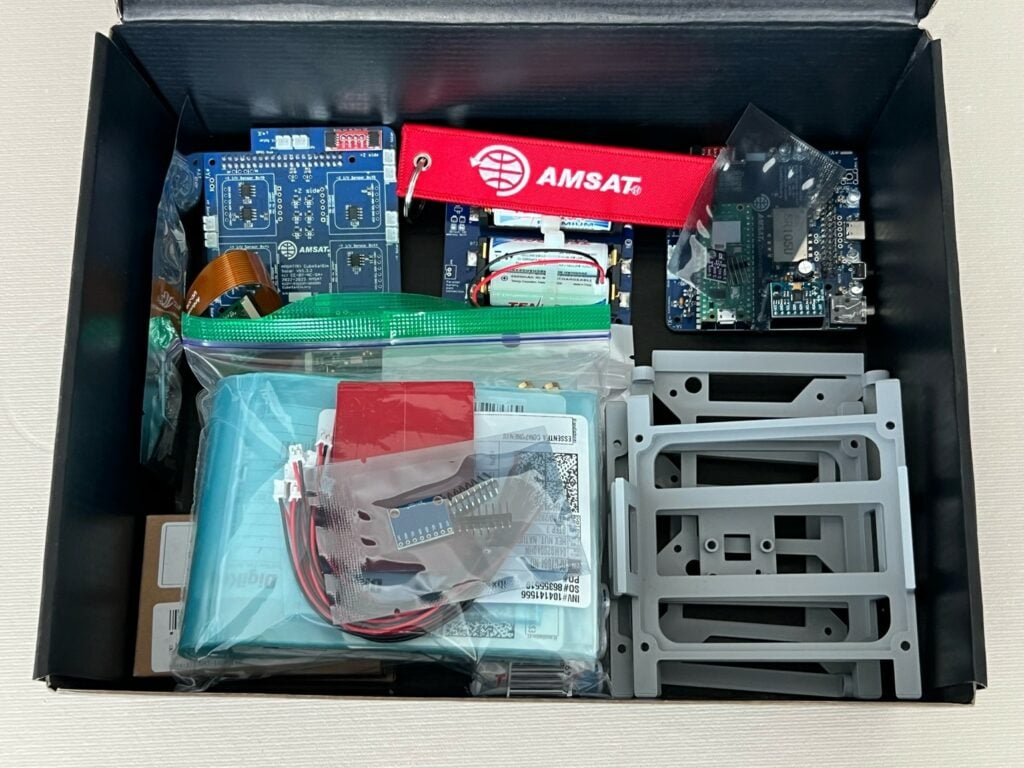

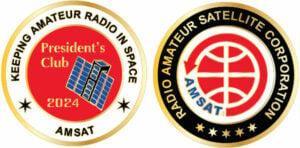

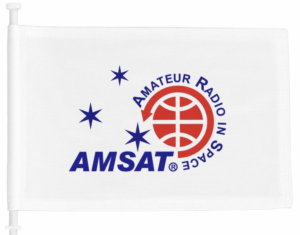
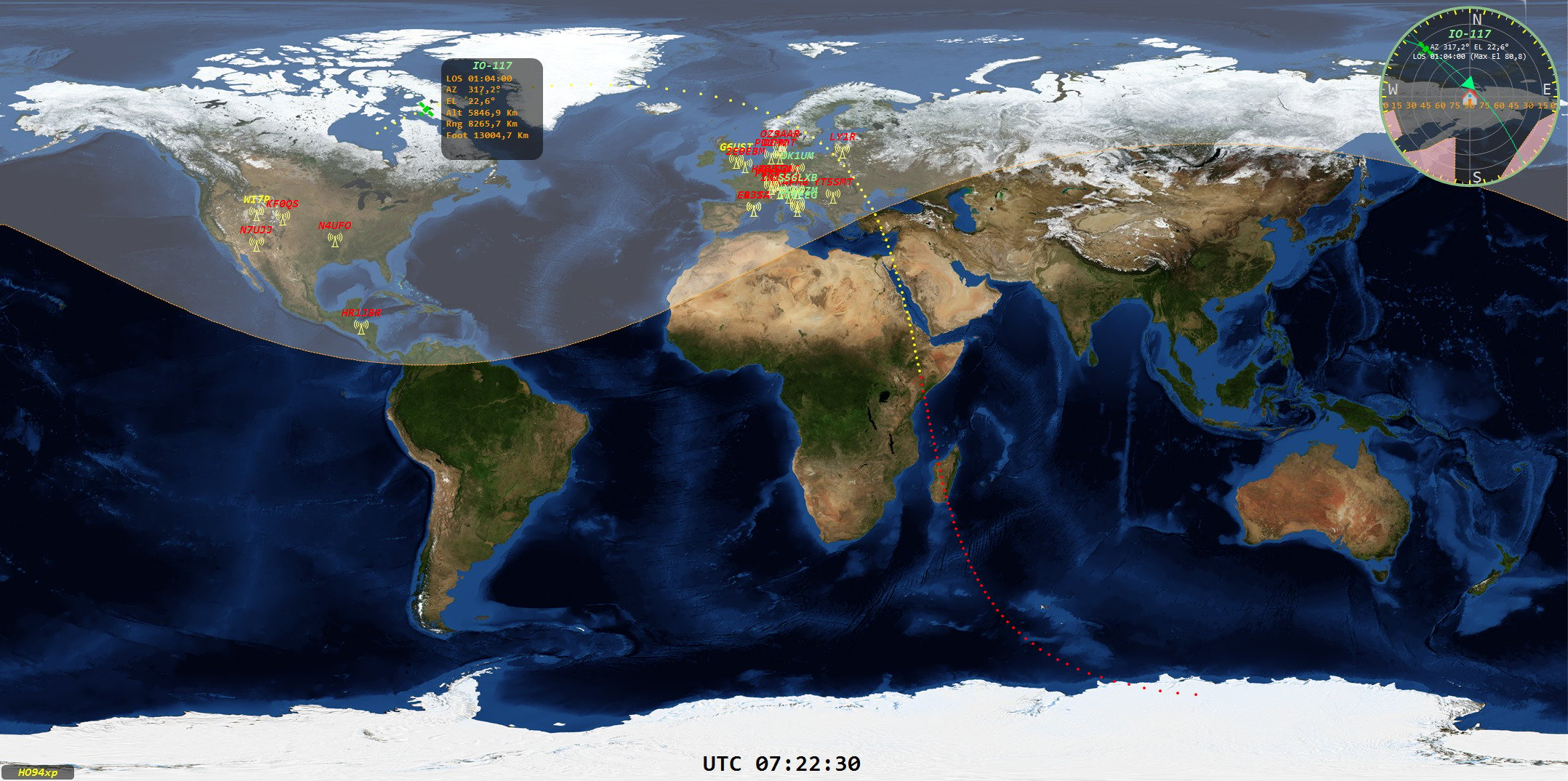
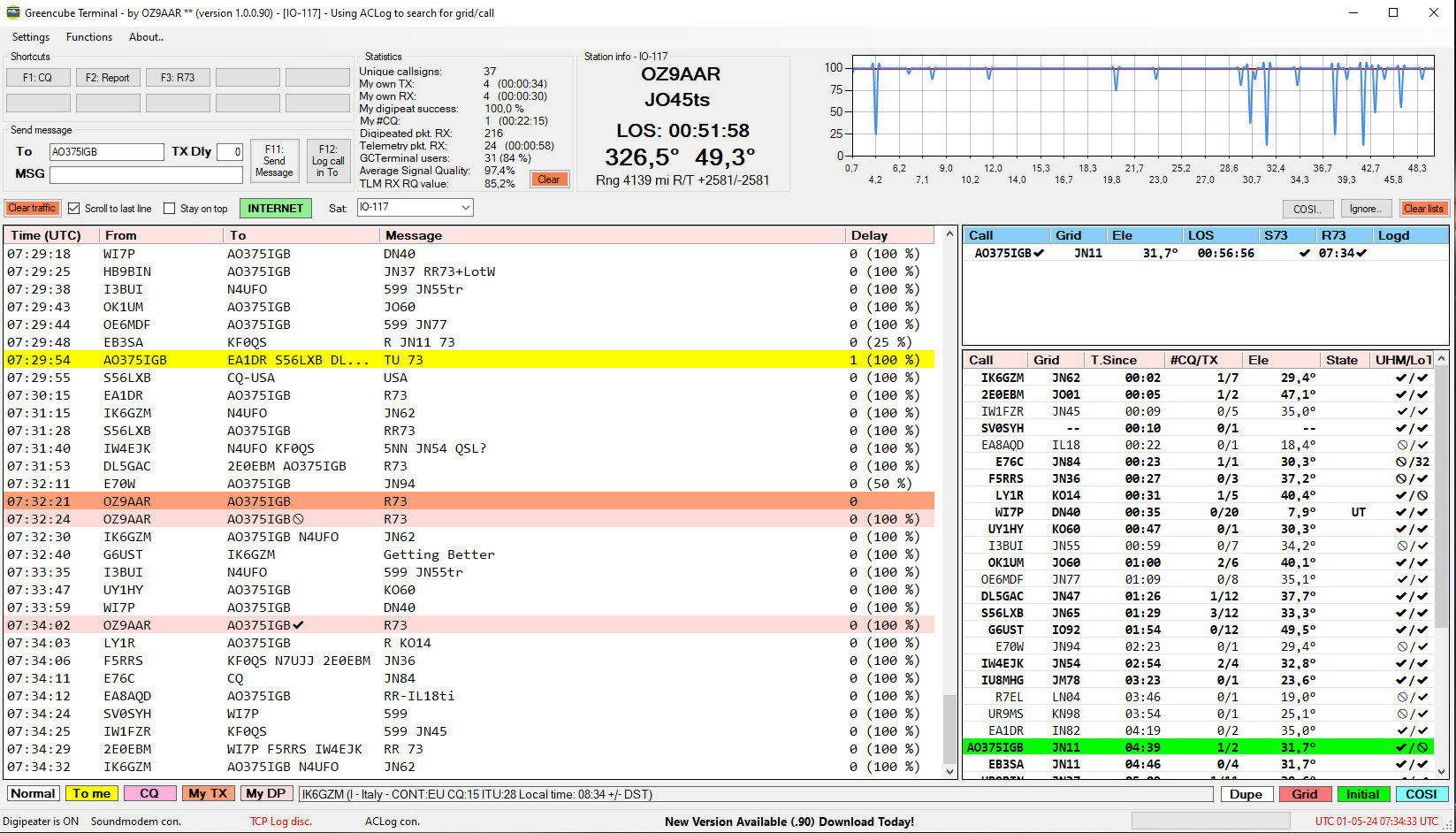
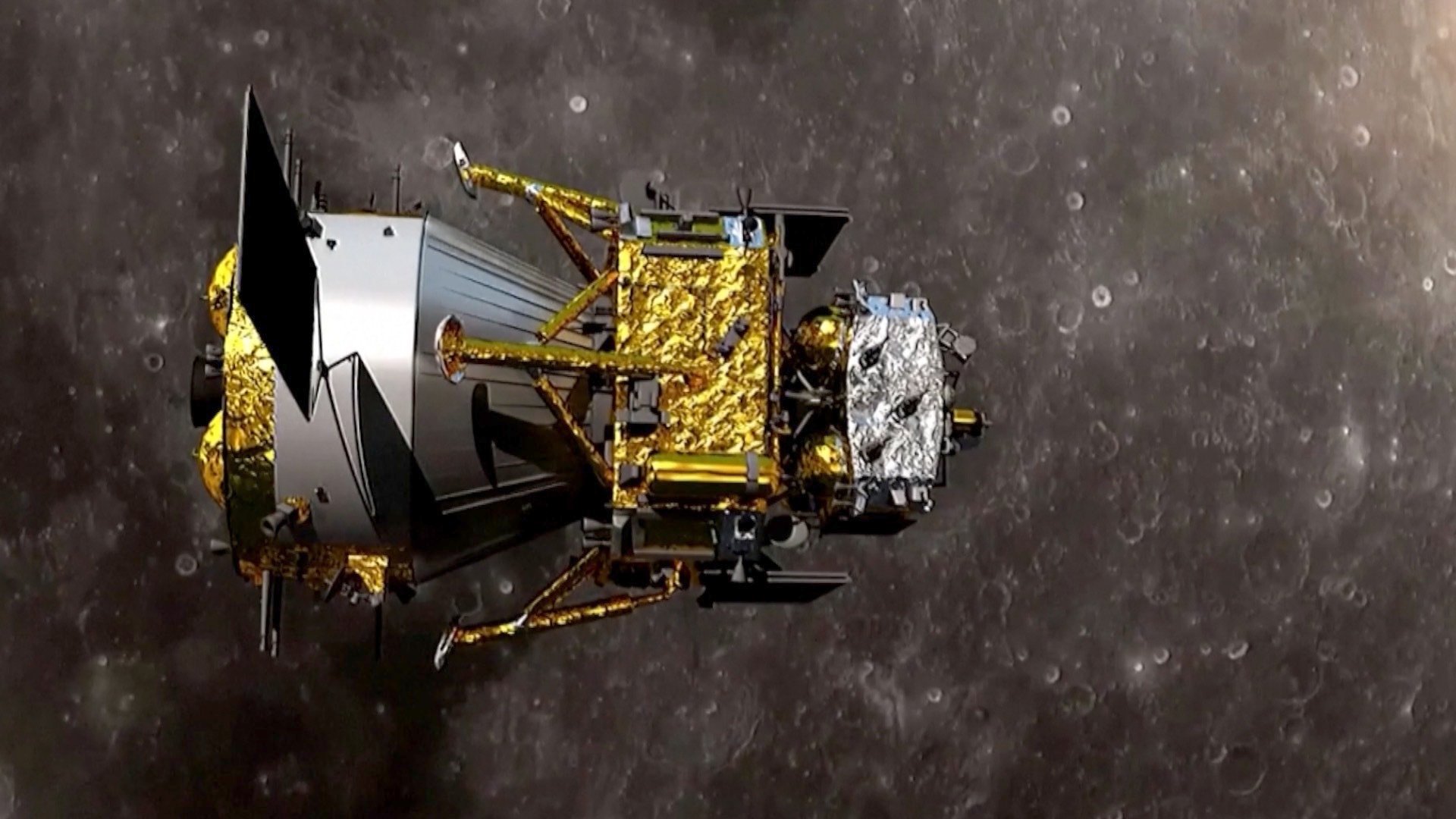
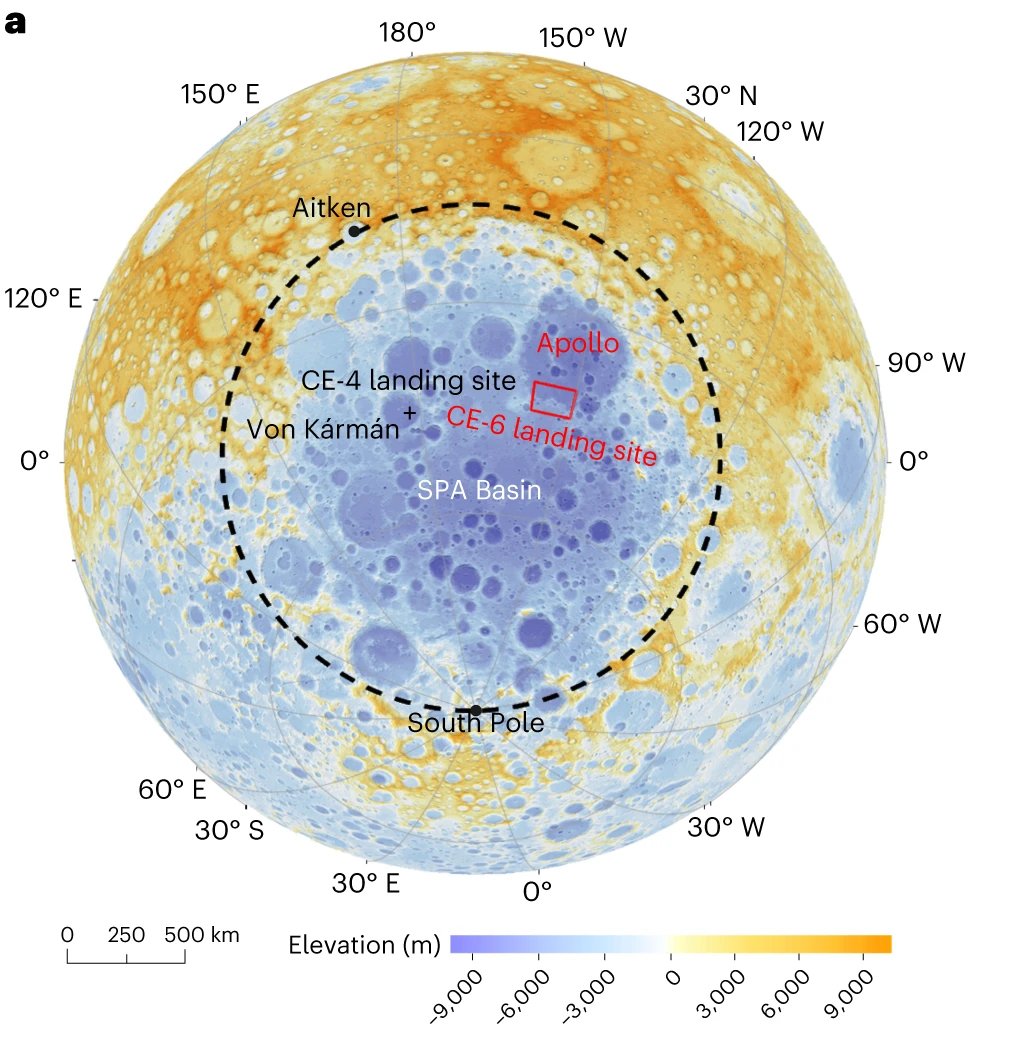
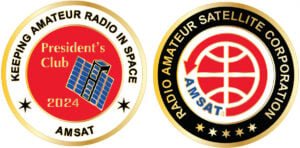 Join the AMSAT President’s Club today and help
Join the AMSAT President’s Club today and help 